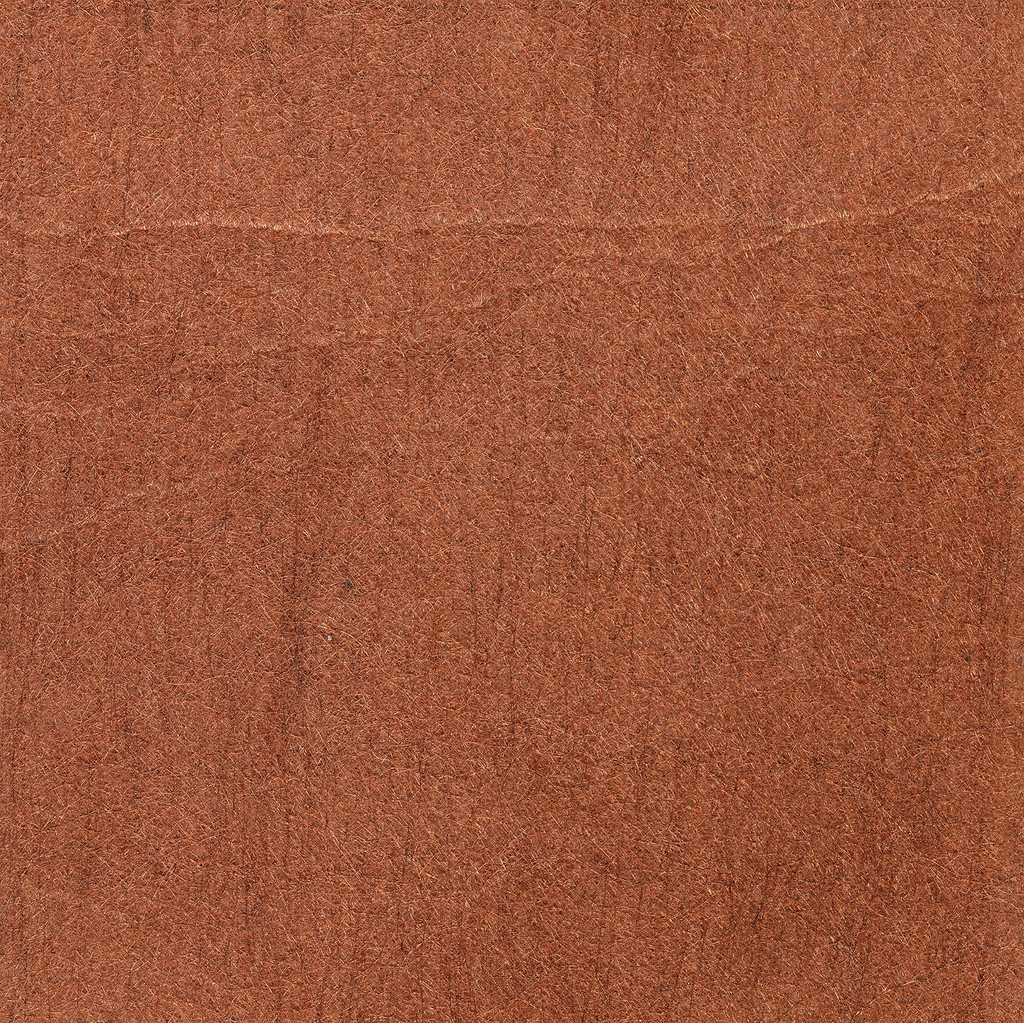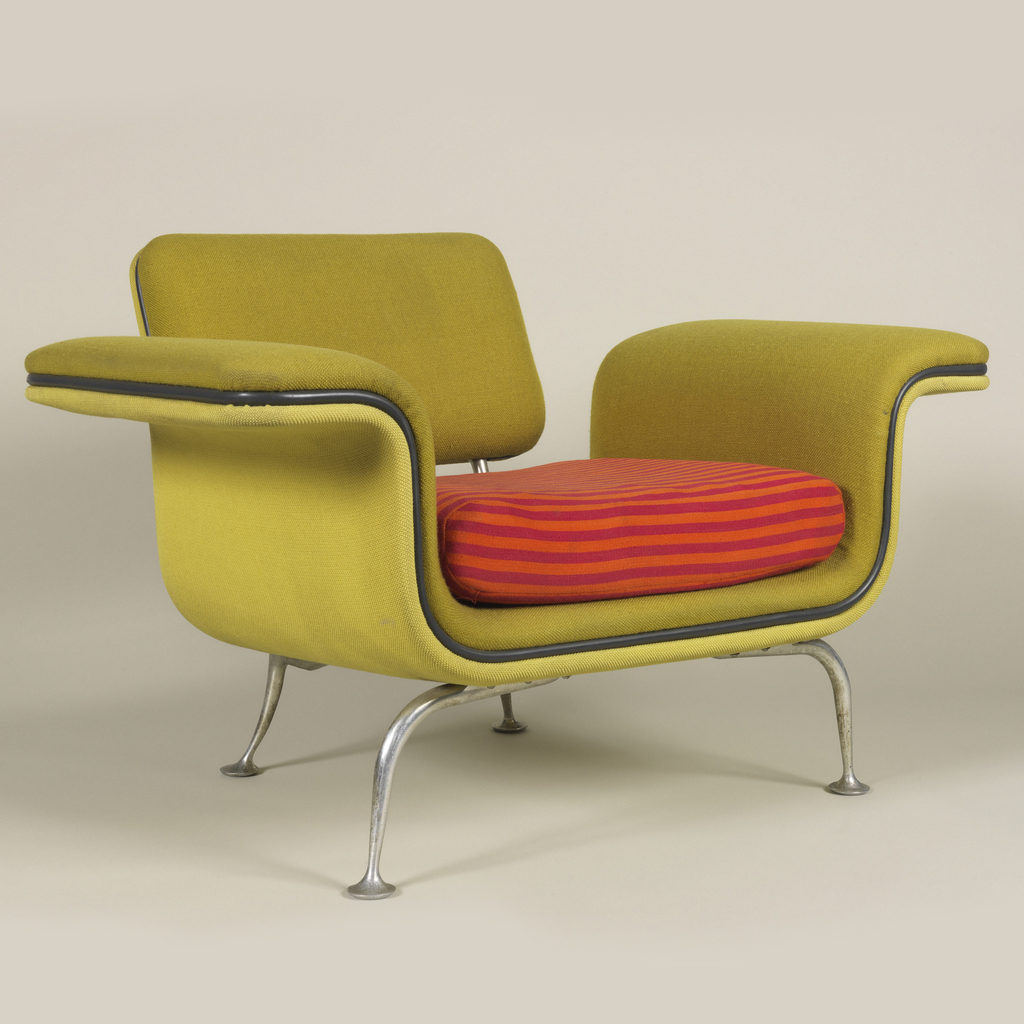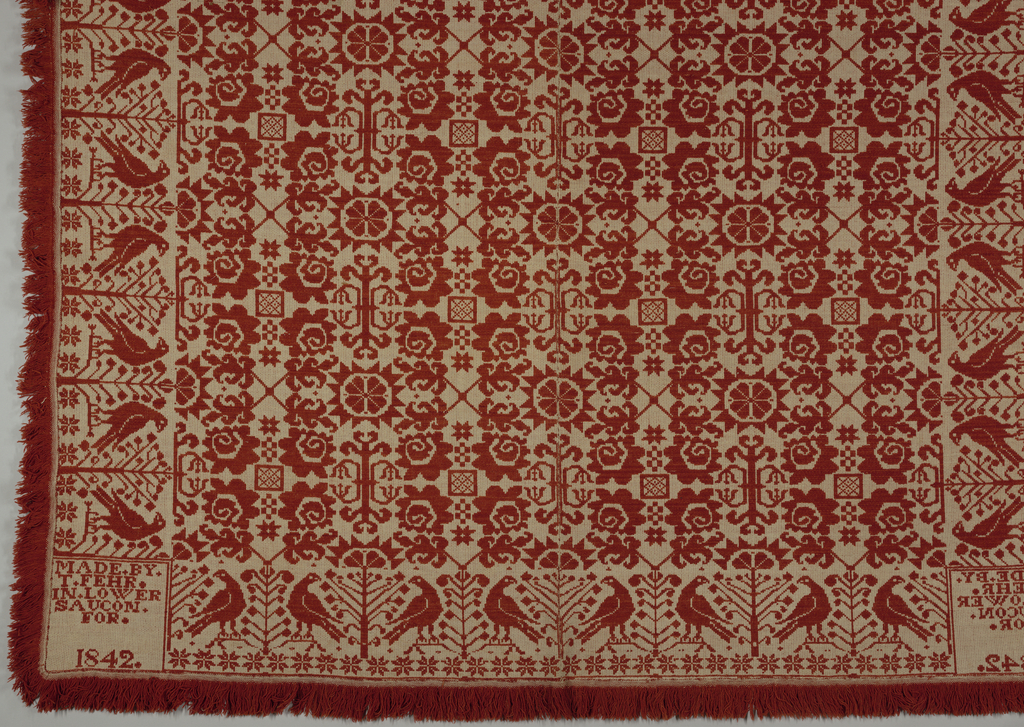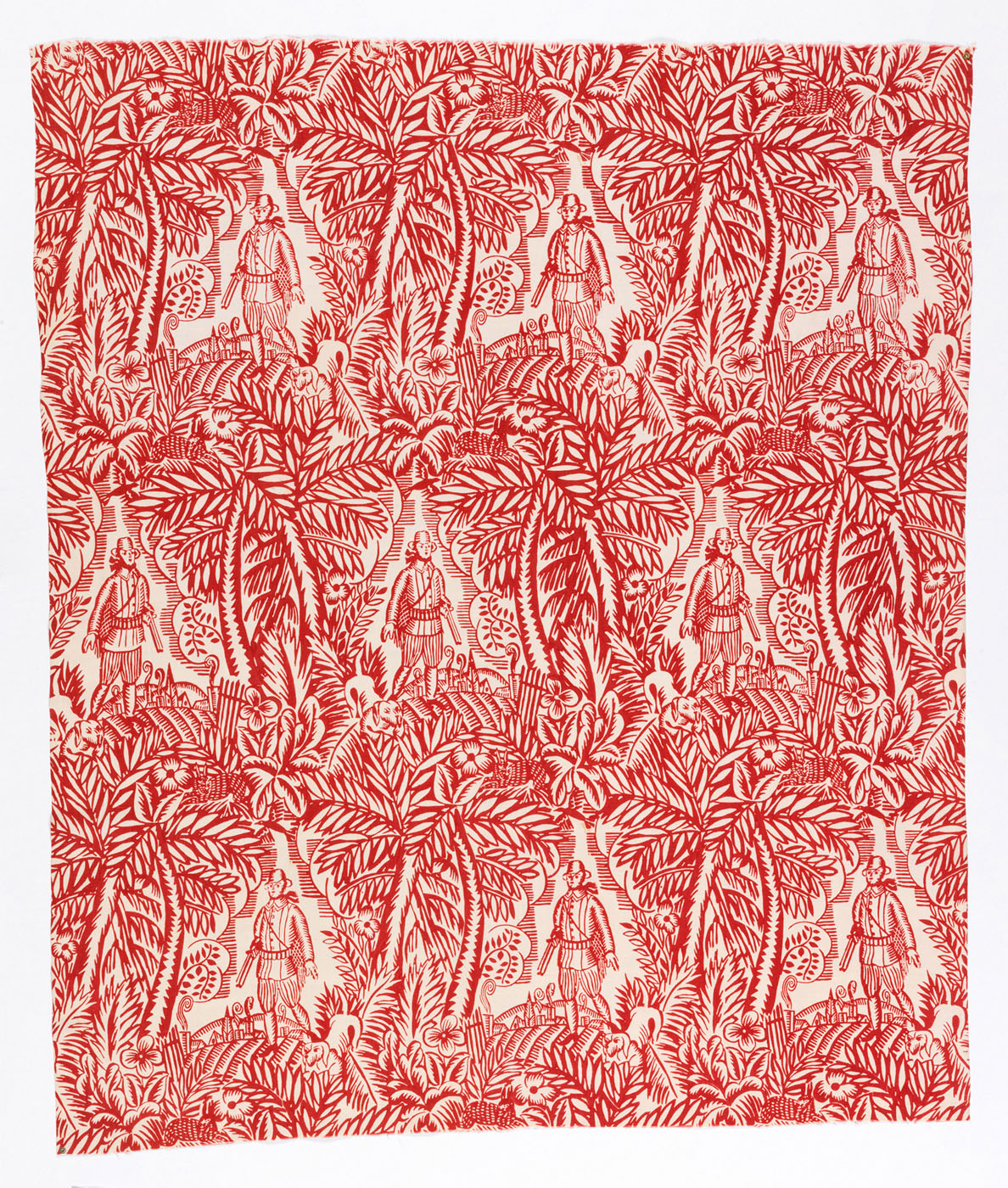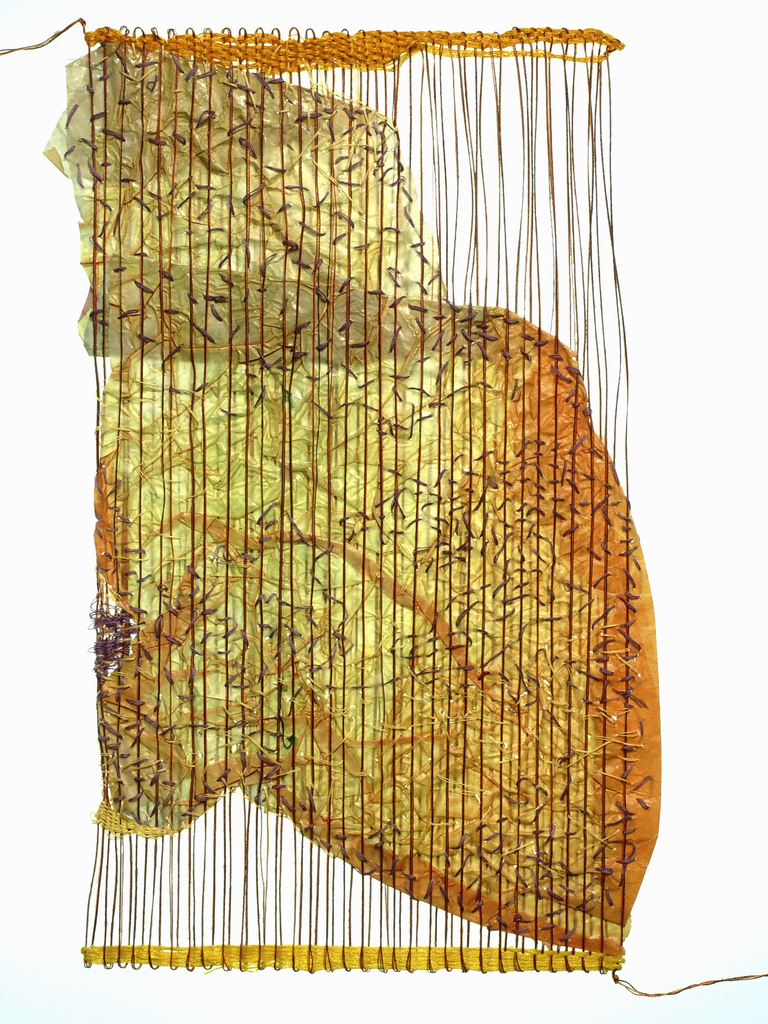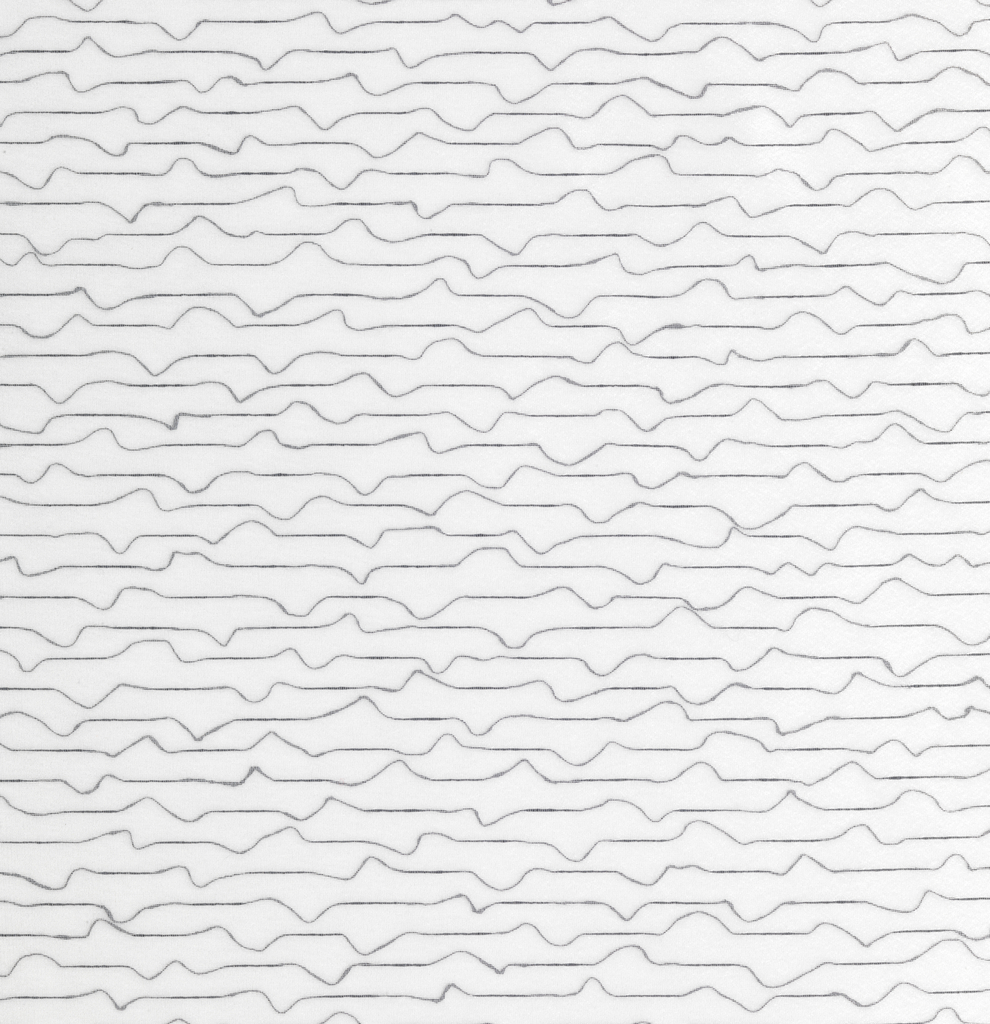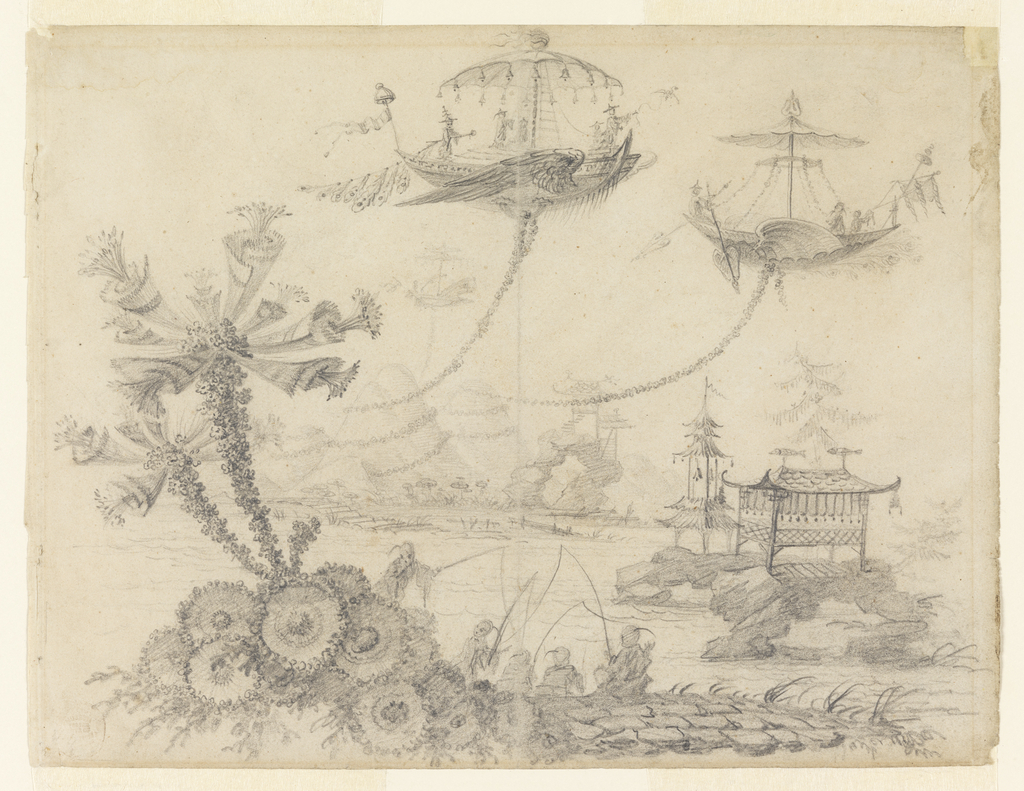Flectron, manufactured by Laird Technologies, is a flexible, lightweight, and highly conductive technical textile used in the building industry. Its non-woven copper-coated polyester structure makes it ideal for preventing electromagnetic interference in areas which need to be shielded, such as conference rooms, offices, and MRI rooms. Flectron is meant to be used and installed like...
Alexander Girard was one of the most prolific interior architects of the twentieth century, one who expressed his enthusiasm for design through his vibrant use of color. Believing that modernism did not equate with the use of drab colors, he incorporated bright hues and bold geometric patterns into his designs. He developed an exciting fabric line for...
Woven coverlets in the United States are typically categorized as either Geometric or Figured and Fancy; the latter describes this red-and-cream wool and cotton example with its floral and animal motifs. Though Figured and Fancy varieties do maintain regularity and often a linear quality, the inclusion of curvilinear lines, natural or architectural elements, etc. distinguishes...
Although best known as a painter, Raoul Dufy was also a skilled printer of woodcuts. In 1910, with the encouragement of fashion designer Paul Poiret, he began translating his woodcuts into fabric designs. His reputation quickly grew, and in 1912 he signed a contract with Lyons-based silk weaving company Bianchini Férier to produce printing plates...
Sheila Hicks is one of the most important textile artists of the 20th century. She trained as a painter under Josef Albers at Yale’s School of Art and Architecture, and upon his recommendation applied for a Fulbright scholarship to study in Chile, commencing her lifelong commitment to textiles. Papillon (1997-2004), like others in her Miniatures...
Fluctuation is the perfect title for Japanese textile artist Akihiro Kaneko’s distinctive work, produced and sold today by Maharam. Made of polyester monofilament (like fishing-line thread) with a supplementary weft of washi, a traditional Japanese paper, the textile’s delicate simplicity is deceiving, as the process is actually quite complex. First, Kaneko creates the double cloth...
Ships, precariously tethered to mountain tops by garlands, hover over a landscape of pure fantasy in this graphite drawing by the French artist Jean-Baptiste Pillement (1728-1808). Pillement was known for his imaginative prints featuring chinoiserie designs that were in essence European variants of Japanese and Chinese motifs. Pillement was a prolific artist who operated in...
Junichi Arai is one of the world’s foremost innovators in textile design. He was born in Kiryu, Japan, an important center for textile production with over 1,000 years of silk-making tradition. As the sixth generation of a mill-owning family, Arai learned at an early age the customary Japanese weaving techniques for obis and kimonos. However,...
See how weaving works in this short video. Weaver Cynthia Alberto demonstrates a simple weaving project using a standard floor loom. She is working at Weaving Hand, the studio she founded in Brooklyn, New York City. This scarf took about 8 hours total to weave. About this series: Design Dictionary is a new Cooper Hewitt...
